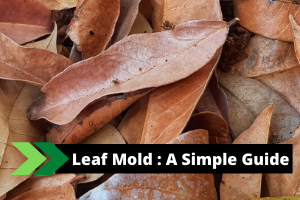Blog
How to Make a Simple Leaf Mold
A Simple Guide to Making Leaf Mold
What is Leaf Mold?
Leaf Mold is a form of compost derived from the slow decomposition of deciduous tree and shrub leaves caused by fungal breakdown.
What Happens in Nature?
In the natural environment, Autumn and Winter leaves fall and create a blanket across the land of deciduous woodlands. This magical mulch allows the nutrients from far beneath the soil to be slowly released back into the earth. In turn, they provide an essential ingredient of organic matter for the topsoil, lock in moisture and fashion a perfect bed for young plants to grow. Below the surface, an explosion of activity takes place as earthworms and isopods alike rush to get involved. This is because the conversion of dark brown leaf matter to a fine-grained humus act as a perfect bedding for worms and other beneficial creatures. The free movement and availability of food ensure that the soil is replenished and new growth can continue.
How Long Does Leaf Mold Take to Decompose?
Leaf Mold can take anywhere between six months and two years to break down depending on the size and variety of the leaves used. Temperature and moisture content also play a big role in the slow process of decomposition.
How to Make Leaf Mold
A basic leaf mold can be made by collecting leaves that have fallen from trees. Although this may initially seem labour-intensive, leaf moldit is well worth the effort. All that is needed is patience and a place to store the leaves for an extended period of time.
To make your own leaf mold you will need;
- Black bags or sacks.
- Water.
- Cable ties
- Sweeping brush or rake.
- A pencil or screwdriver.
- A place to store your leaf mold while it breaks down.
- Patience, 6 months – 2 years.
Leaves can be collected from just about anywhere from parks to roadsides, but it is important to remember that leaves collected from places with heavy traffic may contain pollutants, and material around industrial areas that have been exposed to acid rain may affect the overall quality of the soil. The best places to collect the leaves are areas where contamination is not likely. Parks and densely populated woodlands are the best for quantity but they are more difficult to collect from if you don’t have the tools or transport. Collecting leaves from your garden and surrounding gardens is perfect and they take little effort to gather.
Step 1 – Find the leaves.
Find a good clean source for collecting your leaves. Observe the area around you and chose a spot which you are happy with. Most of the people around you will also be happy to dump them on you if you offer to take them.
Step 2 – Collecting the leaves
Sweep or rake the leaves into manageable piles and bag them. Make sure there are no little bits of plastic or other things that might accidentally find their way into your pile.
Step 3 – Bagging the leaves
Bag as many leaves as you can handle. Chop the leaves down into smaller pieces to speed up the process. If you don’t have a shredder, you can use a lawnmower. 2-3 times should be enough.
leaf mold
Final Tips
Adding moisture to the bags will kick start the process.
Cable tie the bags. This will not rot like string over extended periods of time.
Pierce holes with a screwdriver or pencil to release excess water. If the mix is too wet it will rot and start to smell bad.
Store the bags in a warm spot upside down. Give a little shake and rotate every couple of weeks.
*** If you would like to learn more about composting, check out our other composting articles here.

